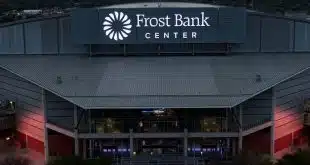Person-to-person payments continue to improve technologically and attract consumers, but providers still haven’t figured out how to make money from them, according to new findings from First Annapolis Consulting Inc.
Linthicum, Md.-based First Annapolis in the second quarter tested a dozen P2P services from large banks and processors down to small startups and supplemented its findings with information from executives at about half the companies. Researchers applied for each service and made at least five transactions through them, says senior consultant Jeff Crawford.
Consumers are using P2P systems for intra-family transfers, very small purchases, and ad-hoc bill payments rather than some of the uses hyped a few years ago, such as a group of friends splitting a dinner tab electronically, according to First Annapolis partner Paul Grill. Mobile devices and social networks are becoming increasingly important aspects of electronic P2P services.
First Annapolis tested services from Wells Fargo & Co., Bank of America Corp., and JPMorgan Chase & Co., which are developing the clearXchange P2P offering; USAA Federal Savings Bank; Fiserv Inc., provider of the Popmoney service for financial institutions; PayPal Inc.; American Express Co.’s Serve; Amazon.com Inc.; MasterCard Inc.’s MoneySend; and startups or small tech providers such as Dwolla Inc., Clover Network Inc., and Venmo Inc.
Providers, however, still have not made the case that their services, which can overcome geographic and time constraints in ways cash and checks can’t, are worth paying for. More than half the surveyed providers don’t charge users. “They haven’t been able to demonstrate yet to consumers, or consumers haven’t responded enthusiastically enough, that they can charge a premium for the product,” Grill tells Digital Transactions News.
Perhaps that mindset will change as P2P functionality continues to advance and consumers more easily learn to whom they could send an electronic payment. Providers also need to offer clear information about their liability policies, promote their customer service, and hammer away at fears about security, according to Grill. None of the services had any obvious security flaws. “With any new service, consumers have some trepidation about how they want to use it,” he says.
First Annapolis estimates the size of the P2P market at $80 billion to $120 billion, with mobile payments growing to more than $50 billion by 2017. The firm did not attempt to rank the providers by volume due to a lack of reliable information, but current leaders include PayPal; BofA, Wells and Chase, which collectively have access to 70 million of what First Annapolis calls “digitally enabled” consumers, and Fiserv, which through its thousands of bank and credit-union clients has access to 35 million online and mobile-banking customers.
First Annapolis, which also studied the P2P market in 2011, found that 58% of services now provide the entire registration process through mobile devices. Some 75% integrate their services with users’ contact lists of phone numbers, a feature that correlates with quicker transaction speeds for the sender.
Other major findings:
–All providers authenticate users during registration and many utilize a multilayer verification process. Half require phone and e-mail information, others require a mix of phone numbers, bank-account information, and personal identification.
–Several providers are integrating their services with social networks to expand distribution and usage. Some 42% are integrated with Facebook, while 25% of services have developed proprietary social or commerce networks where users can share payment activity or find nearby merchants.
–The time required for completing a mobile P2P transaction varied from 15 seconds to 105 seconds, with a mid range of 30 to 62 seconds. First Annapolis says it found that time-out features created a “friction point” by requiring the user to input passwords after set periods of inactivity.
–Eleven of the 12 providers offer online service. For mobile P2P payments, 11 offer payments through Apple Inc.’s iOS operating system and nine utilize Google Inc.’s Android system. Six work on BlackBerry devices from Research in Motion Ltd.
–MasterCard by Sept. 1 will end the consumer aspect of its MoneySend service in the U.S., which the company said was started as a test, and instead will use the MoneySend platform for worldwide business-to-business payments.




